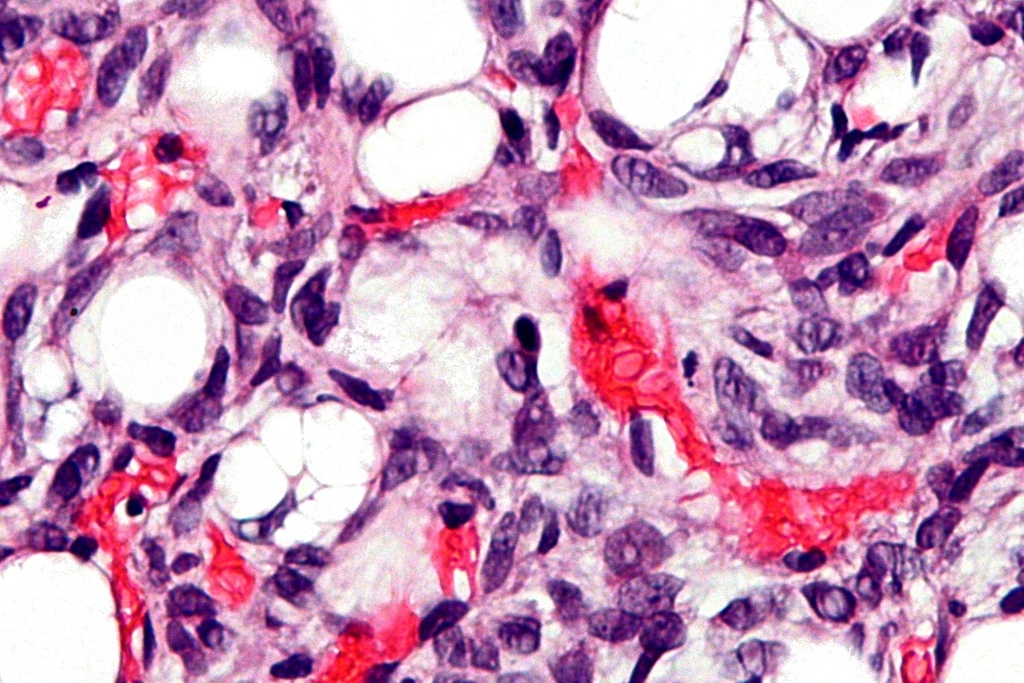Liposarcoma laboratory findings
|
Liposarcoma Microchapters |
|
Diagnosis |
|---|
|
Treatment |
|
Case Studies |
|
Liposarcoma laboratory findings On the Web |
|
American Roentgen Ray Society Images of Liposarcoma laboratory findings |
|
Risk calculators and risk factors for Liposarcoma laboratory findings |
Editor-In-Chief: C. Michael Gibson, M.S., M.D. [1]; Associate Editor(s)-in-Chief: Alejandro Lemor, M.D. [2]
Overview
Laboratory Findings
Biopsy
Although imaging assists in the diagnosis of liposarcoma, a biopsy is needed to confirm the disease and determine the histopathological subtype of liposarcoma.
| Subtype | Findings |
|---|---|
| Atypical Lipomatous Neoplasm (ALN)/Well-Differentiated Liposarcoma (WDL) | 4 subtypes: lipoma-like, sclerosing, spindle cell and inflammatory. Multivacuolated lipoblasts and spindle cells with a hyperchromatic nuclei. Fibrotic areas and atypical stroma cells may be observed. |
| Dedifferentiated Liposarcoma | Abrupt transition from a low-grade to a high-grade differentiation within the same mass of well-differentiated liposarcoma. |
| Myxoid Liposarcoma | Multinodular mass with round cells, hyaluronic acid matrix. High cellularity at the periphery and low cellularity inside the mass. Mitotic activity is normal and the nuclei is normochromatic. |
| Pleomorphic Liposarcoma | Pleomorphic lipoblasts with hyperchromatic nuclei, acidophilic cytoplasm and eosinophilic hyaline globules; spinde cells and multinucleated giant cells may be observed. |
| Mixed-type Liposarcoma | Mixed features of myxoid, pleomorphic and well-differentiated liposarcoma. |
| Table adapted from Fletcher C.D.M., Unni K.K., Mertens F. (Eds.): WHO Classification of Tumours. Pathology and Genetics of Tumours of Soft Tissue and Bone[1] and Enzinger and Weiss's Soft Tissue Tumors , 6th Edition [2] | |
Laboratory Tests
References
- ↑ Fletcher, Christopher (2002). Pathology and genetics of tumours of soft tissue and bone. Lyon: IARC Press. ISBN 9283224132.
- ↑ Goldblum, John (2014). Enzinger and Weiss's soft tissue tumors. Philadelphia, PA: Saunders/Elsevier. ISBN 978-0-323-08834-3.




